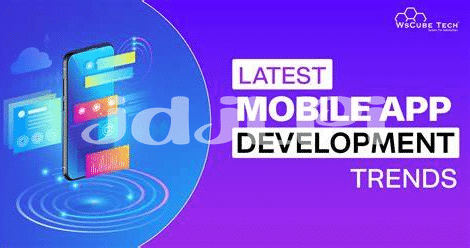- Unveiling the Android Studio Playground 🚀
- Embracing the Languages: Java and Kotlin 📚
- Designing Like a Pro with Ui/ux Principles 👁️
- Powering up with Android Libraries ⚡
- Debugging and Testing Made Simple 🐞
- Launching Your App into the World 🌐
Table of Contents
ToggleUnveiling the Android Studio Playground 🚀
Stepping into the world of Android app creation is like entering a vibrant new playground. Imagine a space where everything you need to build, test, and refine your mobile masterpieces is right at your fingertips. That’s exactly what Android Studio offers. It’s the official integrated development environment (IDE) designed by Google, and it stands as the digital canvas where your app ideas come to life. With user-friendly interfaces and a suite of tools, it caters not just to the seasoned developers but also warmly welcomes newcomers eager to learn.
As you get your hands dirty, you’ll encounter the layout editor, a delightful spot where you drag and drop the visual components of your app, designing right before your eyes. 🧑💻 The code editor is slick, helping you write and manage your app’s behind-the-scenes functionalities with suggestions and shortcuts that feel like having a co-pilot. The best part? Android Studio comes equipped with an emulator, a handy tool that simulates various devices on your computer, so you can see how your app performs in different environments without needing physical devices. 📱✨ Pair that with built-in version control capabilities for saving changes and collaborating with others, and you’ve got a robust playground that supports you from your first line of code to the final product. Here’s a glimpse of what you’ll find in the Android Studio playground:
| Feature | Function |
|---|---|
| Layout Editor | Visual design of app interfaces |
| Code Editor | Writing and managing application code |
| Emulator | Testing apps on different virtual devices |
| Version Control | Managing changes and cooperation |
Every tool and feature therein is crafted to smooth out the learning curve and propel your journey in crafting the next hit app on the Google Play Store. 🚀
Embracing the Languages: Java and Kotlin 📚
Starting your adventure in Android app development is like entering a colorful garden where coding languages are the flowers you’ll use to craft your creations. Java and Kotlin are the two blossoming favorites here – think of Java as the seasoned, steadfast oak that has been part of the Android ecosystem from its earliest days. Its reliability and broad use have equipped countless developers with the tools for building sturdy apps. Meanwhile, Kotlin is like a vibrant, young cherry blossom, admired for its modern features and concise nature, making code easier to read and write. Kotlin has now been adopted by Google as a first-class language for Android, bringing with it a host of benefits such as safety features to prevent common coding mistakes and the ability to interoperate fully with Java.
As you dig deeper into these languages, remember that each comes with its own set of handy tools and shortcuts, designed to make your coding experience smoother and more efficient. Working with Java, you might appreciate its vast ecosystem and the plethora of resources at your disposal. But when you switch to Kotlin, you’ll enjoy the added perks of less code to achieve the same functionality, which means a more straightforward path to creating sleek, performant apps. Whether your journey takes you through the seasoned groves of Java or the blooming pathways of Kotlin, both languages are your allies in this venture. And as you grow as a developer, knowing when and how to utilize each to its fullest can make all the difference in the apps you craft. By the way, if you’re already planning trips to test your latest app, you might find it handy to check out what is the best gas app for traveling for android in 2024 top 5 apps updated. Getting a grip on these languages not only propels your apps to new heights but ensures your coding journey is both efficient and enjoyable. 🌟👩💻🚗
Designing Like a Pro with Ui/ux Principles 👁️
Creating an app isn’t just about writing code; it’s also about making it look good and feel intuitive. Step into the world of colors, shapes, and patterns, where the visual appeal of your app is just as paramount as its functionality. As you immerse yourself in UI/UX, remember that every button placement, color choice, and navigation flow can shape the user’s experience. 🎨 It’s like crafting a journey for your user, ensuring each step is clear and delightful. By adhering to core principles like consistency, simplicity, and accessibility, you transform a mere application into a seamless extension of the user’s lifestyle.
While good design invites users in, great design keeps them there. Delve into the user’s mind: what do they seek, and how can you make the journey effortless? Refine and iterate, balancing aesthetics with usability. Apply contrast to guide the eye, leverage whitespace for clarity, and choose typography that speaks with the right tone. 🖌️ Test your designs with real users, gather feedback, and watch as your app evolves from a functional tool to an enchanting storyteller. Remember, in the mosaic of screens they interact with; your app should feel like coming home – intuitive, comfortable, and above all, human-centered.
Powering up with Android Libraries ⚡
Imagine you’re a chef, and your Android app is a sumptuous dish you’re about to prepare. Just like in the kitchen, where you have an array of spices and special ingredients to make your dish stand out, in the world of app development, you have powerful tools at your disposal—libraries! These libraries are like secret sauces that can add superpowers to your app, helping you create more with less code. They’re a treasure trove of pre-written code that developers can plug into their apps, solving common problems and adding complex features without starting from scratch. 🛠️💻
However, before you dive into this buffet of coding shortcuts, it’s crucial to choose wisely—pick the ones that truly fit the flavors of your app. Are you striving to craft an elegant interface? Reach for a UI library! Need to connect with users around the globe? There’s a library for seamless networking! And, testing your app is like taste-testing your dish; you want to ensure everything blends together perfectly. Libraries can also streamline this phase, making sure the final product is free of bugs. 🐛✨ Remember, your app is not just a tool, it’s an experience for your users. Speaking of experiences, if anyone’s hitting the road soon and needs a savvy travel companion, check out what is the best gas app for traveling for android 2024 top 5 apps updated phone to keep your journey smooth and budget-friendly. Now, with the right libraries infused into your app’s DNA, you’re on the path to launching an app that’s not just functional, but phenomenal. 🚀🌟
Debugging and Testing Made Simple 🐞
Imagine you’re a detective, meticulously scrutinizing every clue to solve a mystery. That’s pretty much what you do when you’re getting rid of bugs in your app – it’s a hunt for sneaky little errors that can cause trouble. The tools in Android Studio are like your magnifying glass, helping you to zoom in on the issues. You’ll use the debugger to follow your app’s operation step by step, watch the values of variables, and see where things might be going off track. It’s like a game of hot and cold; the debugger warms up as you get closer to the problem.
Now, let’s say you’ve played detective and squished those bugs. Before you introduce your app to the world, you need to know it’s ready for the spotlight. Testing your app is like a dress rehearsal for a big show. Android Studio has built-in features that let you mimic how your app would behave on different devices and versions of Android. Plus, there are additional tools that allow you to automate testing 🤖, so you can swiftly check different parts of your app without manually tapping through every screen. These tests help ensure that your app not only looks the part but plays it perfectly.
| Type of Test | What it does | Tools |
|---|---|---|
| Unit Tests | Checks individual pieces of code (like methods) | JUnit |
| Integration Tests | Verifies how different parts of the app work together | Espresso, UI Automator |
| End-to-End Tests | Tests the app’s complete workflow | Espresso |
You’ll start with the small stuff – unit tests – to verify each puzzle piece is in its right place 💼. Next up, integration tests help check that those pieces connect well. Finally, end-to-end tests ensure the entire picture is just as you intended. It’s all about making sure your app doesn’t just work, but works flawlessly for your users.
Launching Your App into the World 🌐
Once your Android app is polished, tested, and ready to amaze users, the adventure of sharing it with the world begins. Think of it as setting sail in the vast digital ocean with your app as the ship; your destination is a thriving community of users. The first step is to dock at the Google Play Store; it’s the grand marketplace where apps meet their potential fans. 🌐 To be welcomed here, you need to create a developer account, follow the guidelines, and submit your app for review.
As your app awaits approval, you can prepare a marketing strategy. Crafting a compelling app description and designing eye-catching visuals will act as a beacon, drawing users to your creation. It’s like preparing a welcoming party that entices people to come aboard. Engaging with social media can act as the wind in your sails; it’s essential to catch the breeze of trending hashtags and social shares to navigate towards greater visibility. 📢
Remember, gathering feedback is like fishing for valuable pearls; it helps you refine and enhance your app over time. Encourage users to leave reviews and ratings; positive feedback can be the current that propels your app towards more users, while constructive criticism can be the compass guiding you to improve. Launching your app is not just about releasing it into the wilds but nurturing it, helping it to grow, and ensuring it continues to chart a course toward success. As your app gains popularity, look for ways to monetize your hard work. Whether it’s through ads, in-app purchases, or premium features, finding the right balance is key—you want to keep your crew of users happy and engaged while also making your voyage profitable. ⚖️
Every app’s journey is unique, and with the right preparations and a bit of sailor’s luck, your Android app can conquer the vast sea of digital delights. Happy launching!




